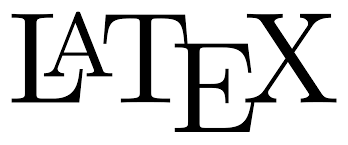Leaders’ Innovative Work Behavior: The Role of Business Acumen, Innovative Self-Efficacy, and Openness
Abstract
Keywords
DOI: 10.22146/gamajop.104317
References
Abdullah, N. H., Wahab, E., & Shamsuddin, A. (2019). Creative self-efficacy, innovative work behaviour and job performance among selected manufacturing employees. The Journal of Social Sciences Research, 5(2), 291–297. https://doi.org/10.32861/jssr.52.291.297
Afsar, B., & Umrani, W. A. (2019). Transformational leadership and innovative work behavior: The role of motivation to learn, task complexity and innovation climate. European Journal of Innovation Management, 23(3), 402–428. https://doi.org/10.1108/EJIM-12-2018-0257
Alfarajat, H. S., & Emeagwali, O. L. (2021). Antecedents of service innovative behavior: The role of spiritual leadership and workplace spirituality. Organizacija, 54(4), 320–333. https://doi.org/10.2478/orga-2021-0022
Amabile, T. M., Schatzel, E. A., Moneta, G. B., & Kramer, S. J. (2004). Leader behaviors and the work environment for creativity: Perceived leader support. The Leadership Quarterly, 15(1), 5–32. https://doi.org/10.1016/j.leaqua.2003.12.003
Anjani, S., & Gatari, E. (2019). Hubungan openness dan conscientiousness terhadap perilaku kerja inovatif: Peran moderasi dari masa kerja pada perusahaan startup. Jurnal Psikologi Talenta. https://scholar.ui.ac.id/en/publications/hubungan-openness-dan-conscientiousness-terhadap-perilaku-kerja-i
Arifin, Z., & Thoyib, A. (2015). The effect of role of leaders and strategic planning intensity on strategic diffusion of middle management in South Kalimantan government. European Journal of Business and Management, 7(28), 135–144. https://citeseerx.ist.psu.edu/document?repid=rep1&type=pdf&doi=932b07d0acb790644d2d52518aaf2651c6be4920
Aristi, S. (2022, July 14). Siap pimpin transisi energi, dirut PLN beberkan jurus capai net zero emission 2060. PT PLN (Persero). https://web.pln.co.id/cms/media/siaran-pers/2022/07/siap-pimpin-transisi-energi-dirut-pln-beberkan-jurus-capai-net-zero-emission-2060
Asif, M., Hussain, M. A., Humayun, S., Awais, M., & Li, M. (2023). Investigating the role of ethical leadership on employee innovativeness through bottom-up job redesigning: Self-leadership as a catalyst. Sustainability, 15(9), 7190. https://doi.org/10.3390/su15097190
Bandura, A. (1997). Self-efficacy: The exercise of control. Freeman.
Baptista, J., Stein, M. K., Klein, S., Watson-Manheim, M. B., & Lee, J. (2020). Digital work and organisational transformation: Emergent digital/human work configurations in modern organisations. The Journal of Strategic Information Systems, 29(2), 101618. https://doi.org/10.1016/j.jsis.2020.101618
Beaton, D. E., Bombardier, C., Guillemin, F., & Ferraz, M. B. (2000). Guidelines for the process of cross-cultural adaptation of self-report measures. Spine, 25(24), 3186–3191. https://doi.org/10.1097/00007632-200012150-00014
Beghetto, R. A. (2006). Creative self-efficacy: Correlates in middle and secondary students. Creativity Research Journal, 18(4), 447–457. https://doi.org/10.1207/s15326934crj1804_4
Blaskovics, B., Maró, Z. M., Klimkó, G., Papp-Horváth, V., & Csiszárik-Kocsir, Á. (2023). Differences between public-sector and private-sector project management practices in Hungary from a competency point of view. Sustainability, 15(14), 11236. https://doi.org/10.3390/su151411236
Bleidorn, W., Schwaba, T., Zheng, A., Hopwood, C. J., Sosa, S. S., Roberts, B. W., & Briley, D. A. (2022). Personality stability and change: A meta-analysis of longitudinal studies. Psychological Bulletin, 148(7–8), 588–611. https://doi.org/10.1037/bul0000365
Bos-Nehles, A. C., & Veenendaal, A. A. (2019). Perceptions of HR practices and innovative work behavior: The moderating effect of an innovative climate. The International Journal of Human Resource Management, 30(18), 2661–2683. https://doi.org/10.1080/09585192.2017.1380680
Bouhali, R., Mekdad, Y., Lebsir, H., & Ferkha, L. (2015). Leader roles for innovation: Strategic thinking and planning. Procedia – Social and Behavioral Sciences, 181, 72–78. https://doi.org/10.1016/j.sbspro.2015.04.867
Bowling, N. A., Huang, J. L., Bragg, C. B., Khazon, S., Liu, M., & Blackmore, C. E. (2016). Who cares and who is careless? Insufficient effort responding as a reflection of respondent personality. Journal of Personality and Social Psychology, 111(2), 218–229. https://doi.org/10.1037/pspp0000085
Carmeli, A., & Schaubroeck, J. (2007). The influence of leaders’ and other referents’ normative expectations on individual involvement in creative work. The Leadership Quarterly, 18(1), 35–48. https://doi.org/10.1016/j.leaqua.2006.11.001
Chen, G., Gully, S. M., & Eden, D. (2004). General self-efficacy and self-esteem: Toward theoretical and empirical distinction between correlated self-evaluations. Journal of Organizational Behavior, 25(3), 375–395. https://doi.org/10.1002/job.251
Christie, A., & Tippmann, E. (2024). Intended or unintended strategy? The activities of middle managers in strategy implementation. Long Range Planning, 57(1), 102410. https://doi.org/10.1016/j.lrp.2023.102410
Costa, P. T., & McCrae, R. R. (1992). Normal personality assessment in clinical practice: The NEO Personality Inventory. Psychological Assessment, 4(1), 5–13. https://doi.org/10.1037/1040-3590.4.1.5
Darling, S. D., & Cunningham, J. B. (2016). Underlying values and competencies of public and private sector managers. Asian Education and Development Studies, 5(4), 371–387. https://doi.org/10.1108/AEDS-09-2015-0050
De Jong, J. P. J., & Den Hartog, D. N. (2005). Determinanten van innovatief gedrag: Een onderzoek onder kenniswerkers in het MKB. Gedrag & Organisatie, 18(5), 235–259. https://doi.org/10.5117/2005.018.005.001
Dediu, V., Leka, S., & Jain, A. (2018). Job demands, job resources and innovative work behaviour: A European Union study. European Journal of Work and Organizational Psychology, 27(3), 310–323. https://doi.org/10.1080/1359432X.2018.1444604
DeVellis, R. F. (2017). Scale development: Theory and applications (4th ed.). SAGE Publications.
Douven, I. (2018). A Bayesian perspective on Likert scales and central tendency. Psychonomic Bulletin & Review, 25(3), 1203–1211. https://doi.org/10.3758/s13423-017-1344-2
Refbacks
- There are currently no refbacks.
Copyright (c) 2025 Gadjah Mada Journal of Psychology (GamaJoP)

This work is licensed under a Creative Commons Attribution-ShareAlike 4.0 International License.









